Discover the 12 best code language translator tools for 2025. Compare features, pricing, and pros/cons to streamline your development workflow.
In the contemporary development landscape, migrating code between languages and frameworks is a frequent necessity. Whether modernizing a legacy system, adopting a new technology stack, or ensuring cross-platform compatibility, manually rewriting code is a time-consuming and error-prone process. A dedicated code language translator mitigates these challenges, becoming an essential asset for any development team.
These platforms utilize advanced algorithms and AI to automate the conversion process, translating complex logic from languages like Java to Python or converting entire component libraries from Bootstrap to Tailwind CSS. This guide moves beyond marketing hype to provide an in-depth, analytical breakdown of the leading code translation tools. We will evaluate each platform’s core functionality, practical use cases, and notable limitations.
This resource is designed to help you quickly identify the ideal code language translator for your specific project requirements. Each entry includes detailed analysis, screenshots, and direct links, enabling you to make an informed decision and streamline your development workflow. Prepare to find the right solution to accelerate your multi-language projects and reduce manual refactoring efforts.
The Code Language Converter by DocuWriter.ai stands out as a premier AI-driven tool meticulously engineered for modern development workflows. It excels at translating entire codebases between different programming languages and, critically, between frontend frameworks. This dual capability makes it an exceptionally versatile code language translator for teams tackling complex modernization or migration projects. It effectively automates what is typically a manual, time-consuming, and error-prone process.
Whether migrating a legacy Java application to a modern Dart framework for cross-platform mobile development or updating an older website from Bootstrap to the utility-first approach of TailwindCSS, this tool provides a robust foundation. It leverages advanced AI to not just swap syntax but to understand context, preserving the logic and structure of the original code with impressive accuracy. The integration within the broader DocuWriter.ai ecosystem, which includes tools for code refactoring and UML diagram generation, creates a powerful, synergistic environment for improving code quality and maintainability.
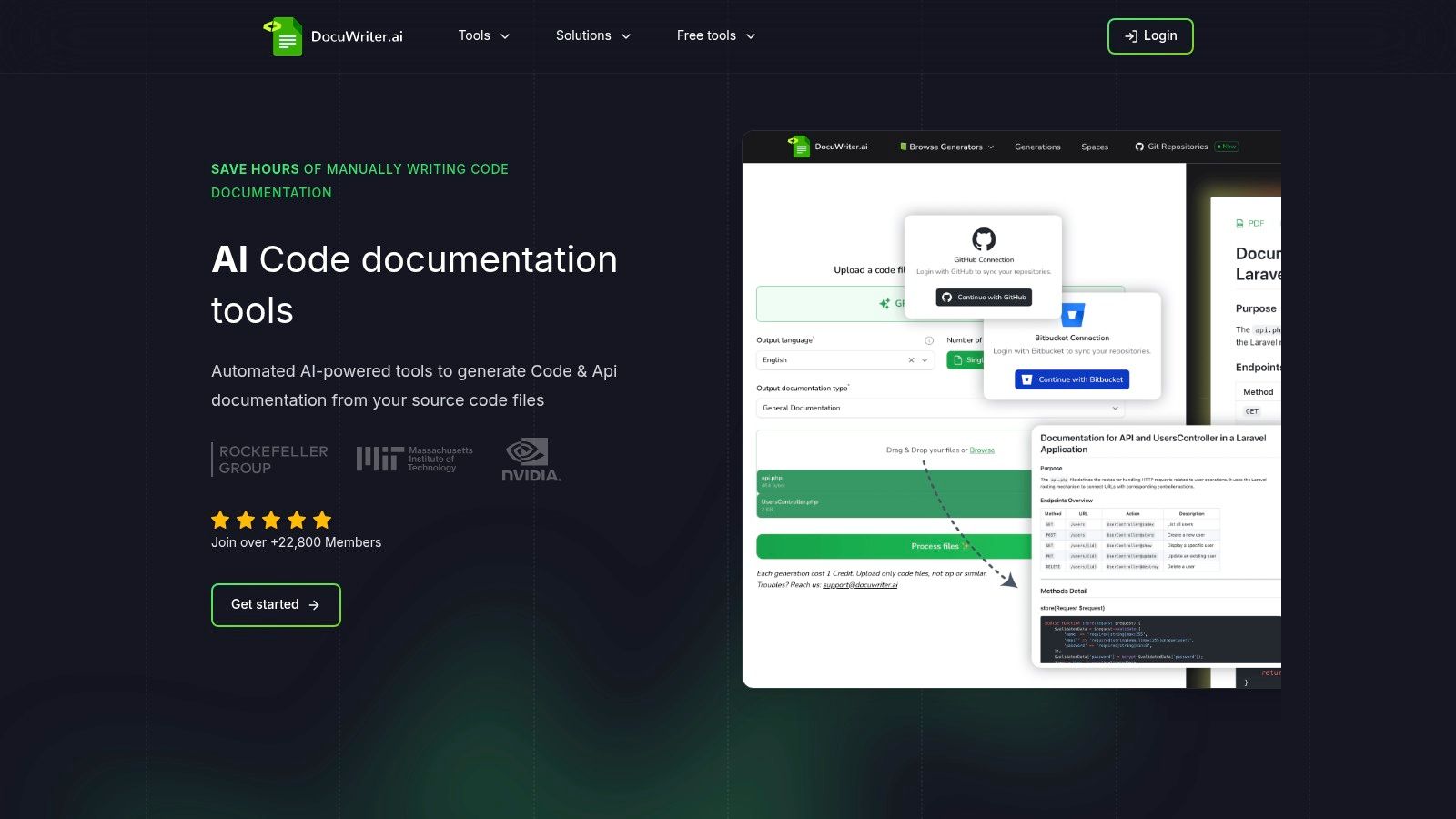
One of its most significant advantages is its ability to handle both backend and frontend conversions, a feature not commonly found in a single platform. This makes it an invaluable asset for full-stack teams. For instance, a development team can use it to convert a Python backend to Go for enhanced performance while simultaneously translating the corresponding jQuery-based frontend to React. Beyond direct language-to-language translation, other forms of code adaptation are also crucial in modern development; a related challenge is learning how to turn your website into a mobile app, which often involves significant code conversion and platform-specific adjustments.
The AI-powered nature of the conversion ensures that the resulting code is not only syntactically correct but also idiomatic to the target language or framework, reducing the amount of manual cleanup required. You can learn more about its technical capabilities on docuwriter.ai to understand the underlying AI models.
The Code Language Converter is offered through flexible subscription plans on the DocuWriter.ai website, catering to individual developers, small teams, and large enterprises. While the AI is highly proficient, users should anticipate a final manual review stage, especially for highly complex or nuanced business logic, to ensure perfect alignment with project-specific requirements. Support is primarily focused on popular, high-demand languages and frameworks, so teams working with more obscure technologies should verify compatibility.
Lokalise is a sophisticated translation management system (TMS) designed for agile teams, moving beyond simple code language translation to full-scale software localization. It’s not a direct code-to-code transpiler but rather a platform for translating the user-facing strings within your software, from web apps to mobile applications. Its core strength lies in integrating localization directly into the development lifecycle, allowing teams to manage translations concurrently with coding.
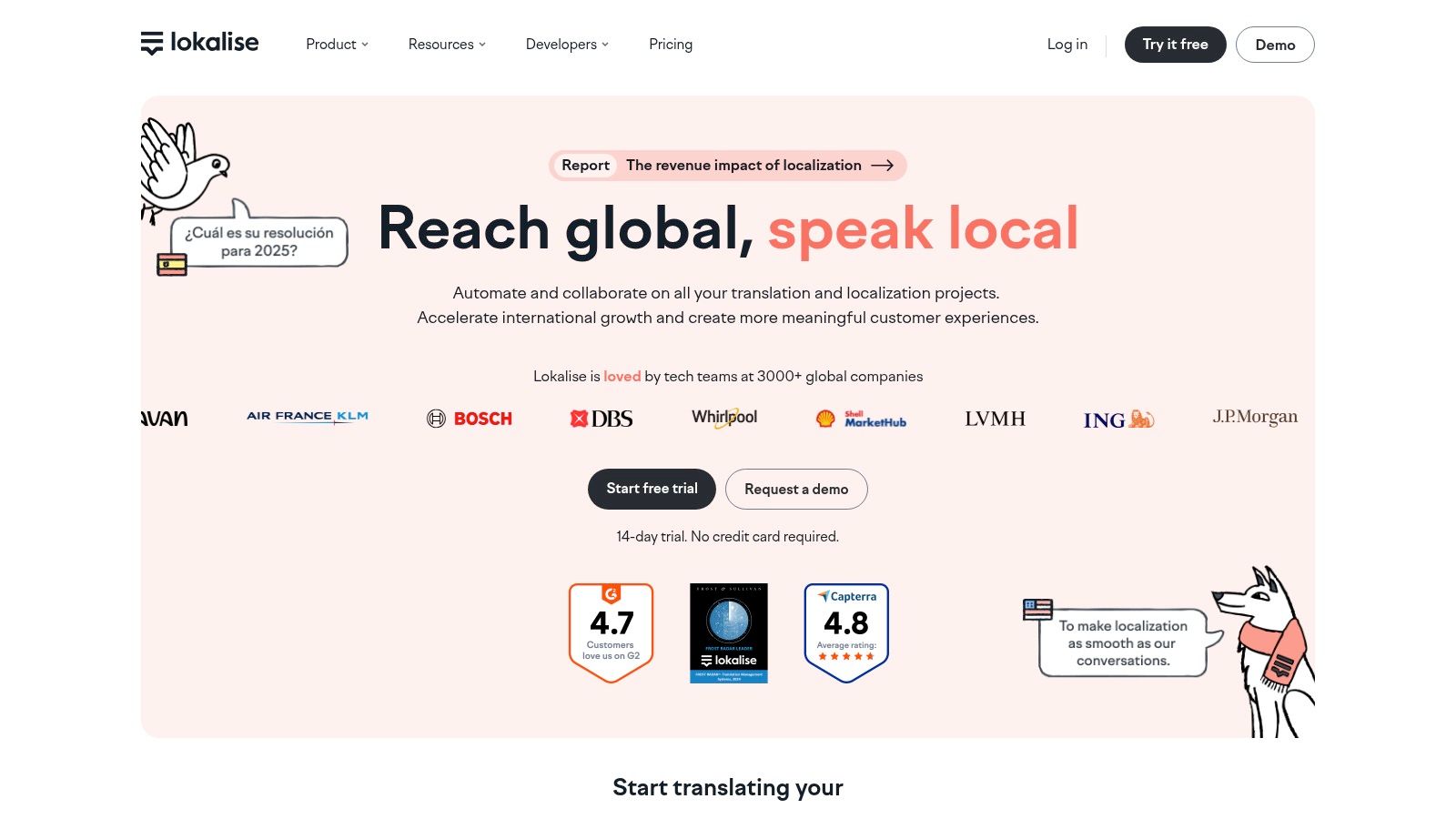
This platform excels with its robust integrations for developer tools like GitHub, GitLab, and Bitbucket, automating the pull-and-push of translation files. For development teams, the standout feature is the Over-the-Air (OTA) SDK. This allows you to update translations in live mobile or web apps instantly, without needing a new app store submission or deployment.
Website: https://lokalise.com
Crowdin is a cloud-based localization management platform built for collaboration, making it a popular choice for software and game development. While not a direct code language translator, it excels at managing the translation of user-facing strings and documentation. It streamlines the localization workflow by integrating directly with developer tools, allowing teams to automate the process of syncing source and translated files.
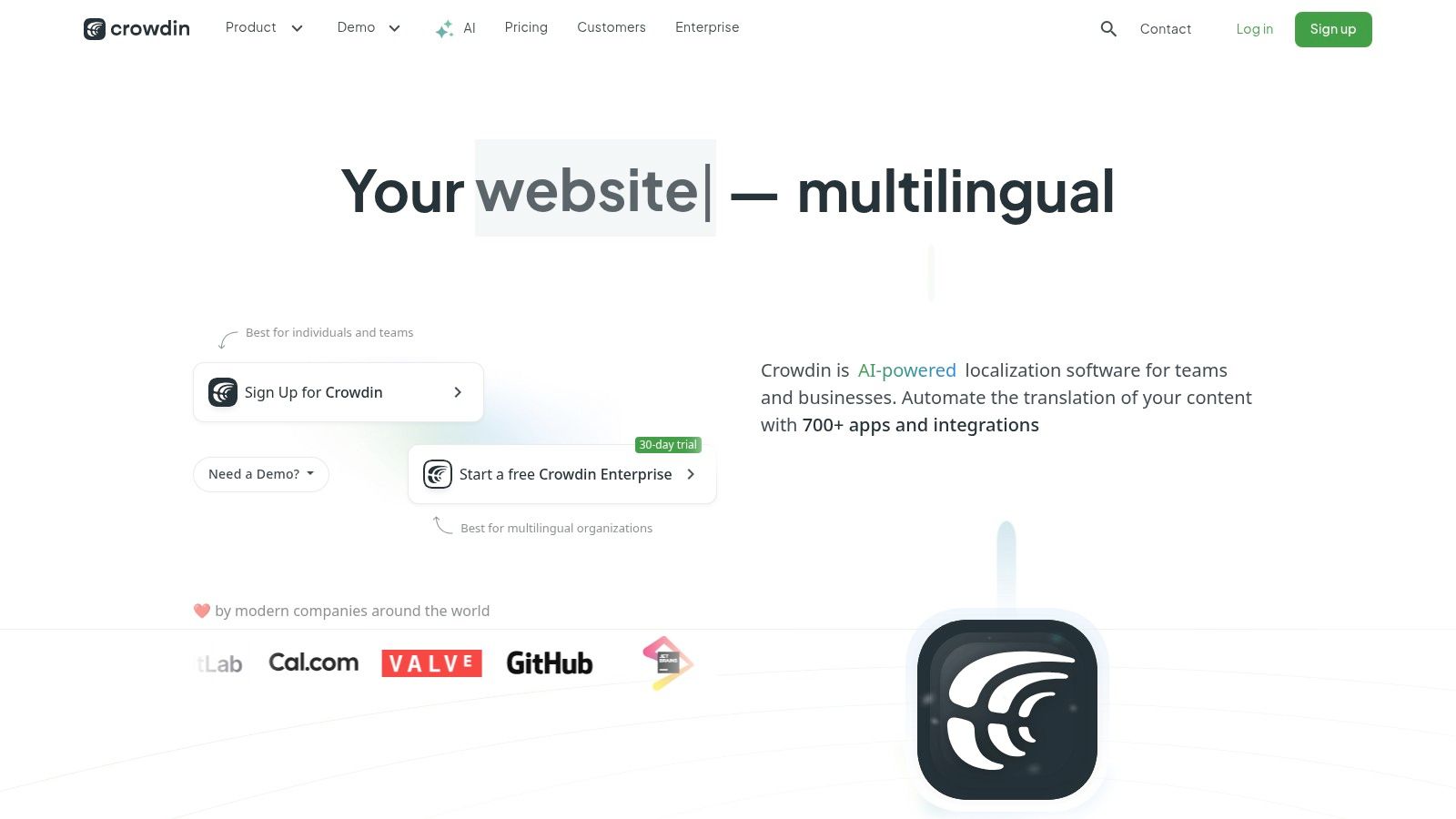
The platform stands out with its powerful community-oriented features, such as commenting, voting on translations, and task management. This makes it particularly effective for open-source projects where volunteer translators contribute. Crowdin’s In-Context Editing tool provides translators with a live preview of the UI, ensuring translations fit the design and context perfectly.
Website: https://crowdin.com
Weglot is a website translation solution that focuses on simplicity and speed, making multilingual capabilities accessible without deep coding knowledge. Unlike a traditional code language translator that converts programming syntax, Weglot operates at the content layer of a website. It automatically detects, translates, and displays website text, integrating seamlessly with platforms like WordPress, Shopify, and Webflow through simple plugins or JavaScript snippets. This makes it a powerful tool for businesses wanting to quickly launch in new markets.
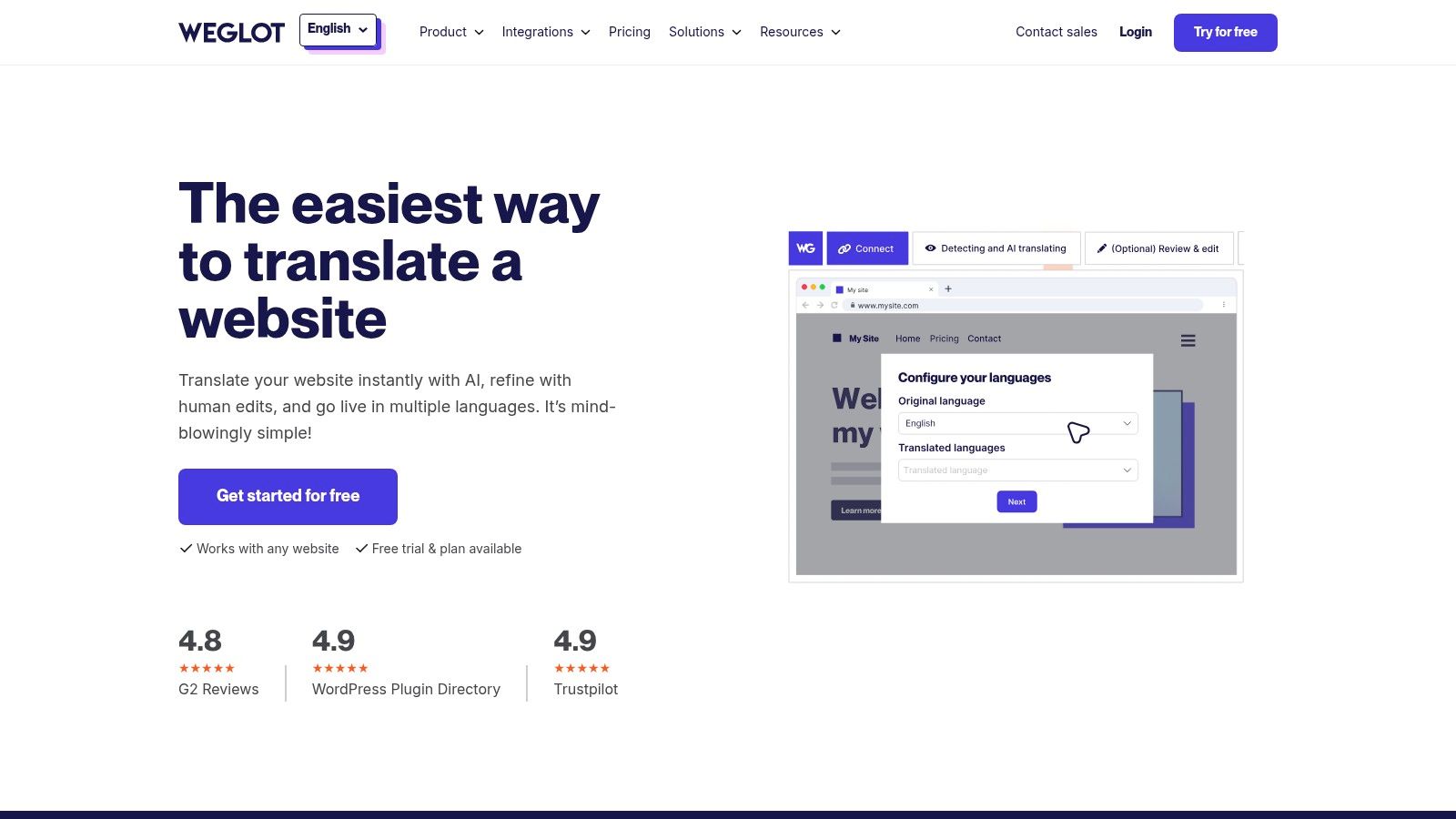
The platform provides a first layer of machine translation that users can then manually refine through an intuitive “in-context” editor, which shows changes live on the website’s design. This hybrid approach balances efficiency with quality control. It also handles multilingual SEO automatically by translating metadata and adding hreflang tags, a critical feature for discoverability in different regions. Weglot is fundamentally about making front-end content translation effortless for website owners.
Website: https://weglot.com
Transifex is a cloud-based translation management system (TMS) focused on continuous localization for dynamic, technology-driven companies. Much like its competitors, it isn’t a direct code language translator but a platform for managing the translation of user-facing content within software. Its strength lies in its comprehensive workflow automation and robust collaboration tools, making it ideal for teams handling complex localization projects across multiple platforms.

The platform is designed to seamlessly integrate into a developer’s workflow, supporting a wide array of file formats and connecting with tools like GitHub and Jira. Transifex Native is a standout feature, allowing for real-time translation updates pushed directly to live applications without a new deployment. This over-the-air delivery model empowers teams to fix typos or update messaging instantly, dramatically reducing the time to market for global content.
Website: https://www.transifex.com
Phrase is a comprehensive software localization platform designed to streamline the translation workflow for development teams of all sizes. Like other translation management systems, it doesn’t function as a direct code language translator but focuses on managing and translating the user-facing strings within applications. It creates a centralized hub where developers, translators, and project managers can collaborate efficiently, integrating localization deep into the product development cycle.
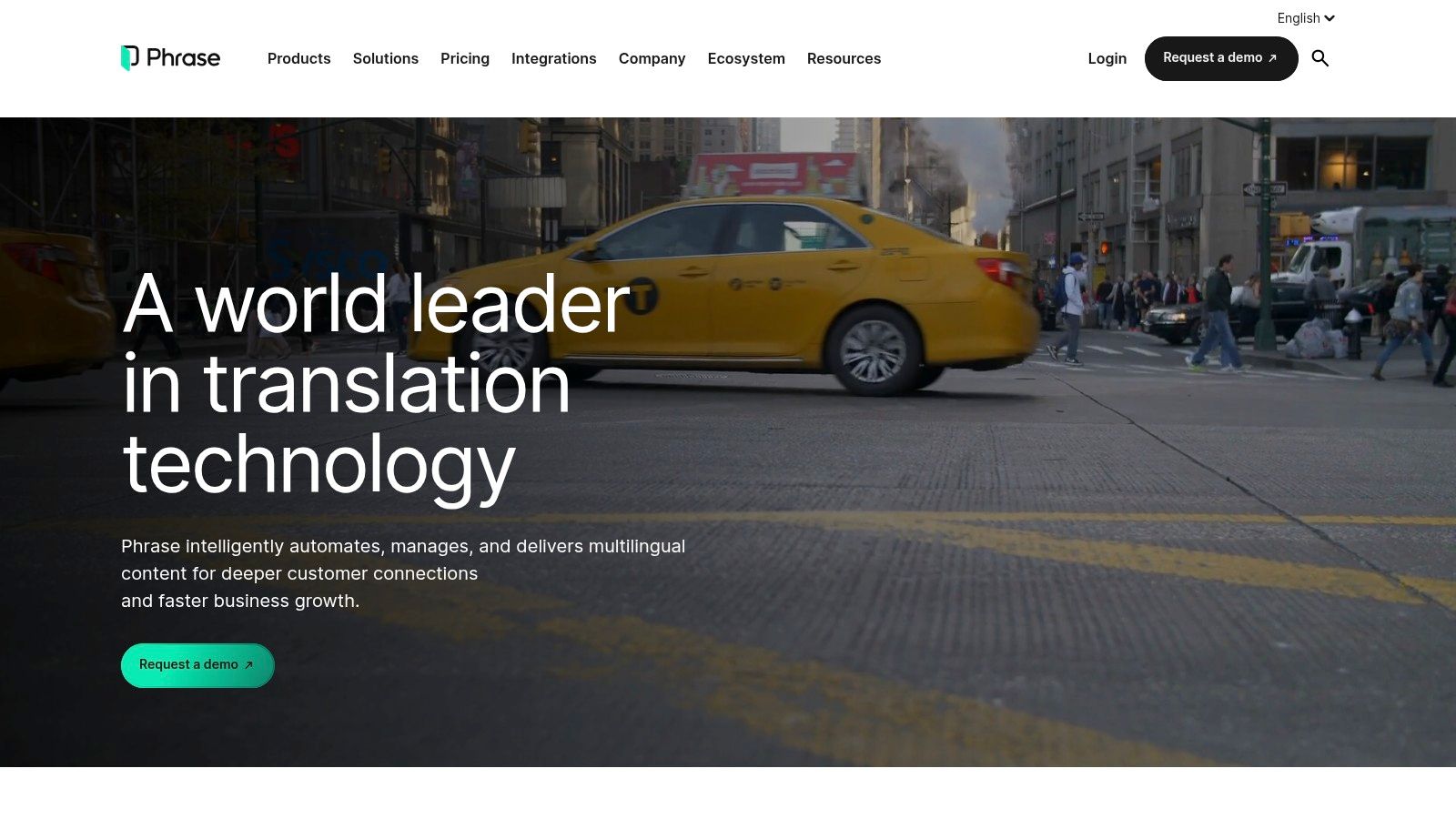
The platform’s key strength is its flexibility and powerful integration capabilities. It syncs directly with repositories like GitHub, GitLab, and Bitbucket, automating the process of handling translation files. A standout feature is its support for branching and versioning, which allows localization efforts to mirror the software development workflow, ensuring that translations for new features are managed in parallel without disrupting the main production branch.
Website: https://phrase.com
Smartling is a cloud-based translation management system that bridges the gap between content creation and localization. While not a direct code language translator for transpiling logic, it excels at managing the linguistic assets embedded within software, such as UI strings, documentation, and marketing content. The platform is engineered for enterprise-scale projects, offering powerful automation and workflow customization to handle complex localization needs across multiple digital channels.
Its primary distinction lies in its comprehensive, end-to-end approach. Smartling combines a CAT (Computer-Assisted Translation) tool with a robust TMS, allowing teams to manage everything from translation memory to quality assurance within a single ecosystem. This centralizes control and provides clear visibility into the entire localization pipeline, a critical feature for large organizations coordinating with multiple vendors and internal teams.
Website: https://smartling.com
POEditor is a streamlined online localization platform and translation management system designed for simplicity and efficiency. While not a direct code language translator in the sense of converting syntax, it excels at managing the user-facing strings within software projects. Its primary strength lies in providing an accessible, collaborative environment for translating localization files, making it ideal for teams that need a straightforward tool without a steep learning curve.
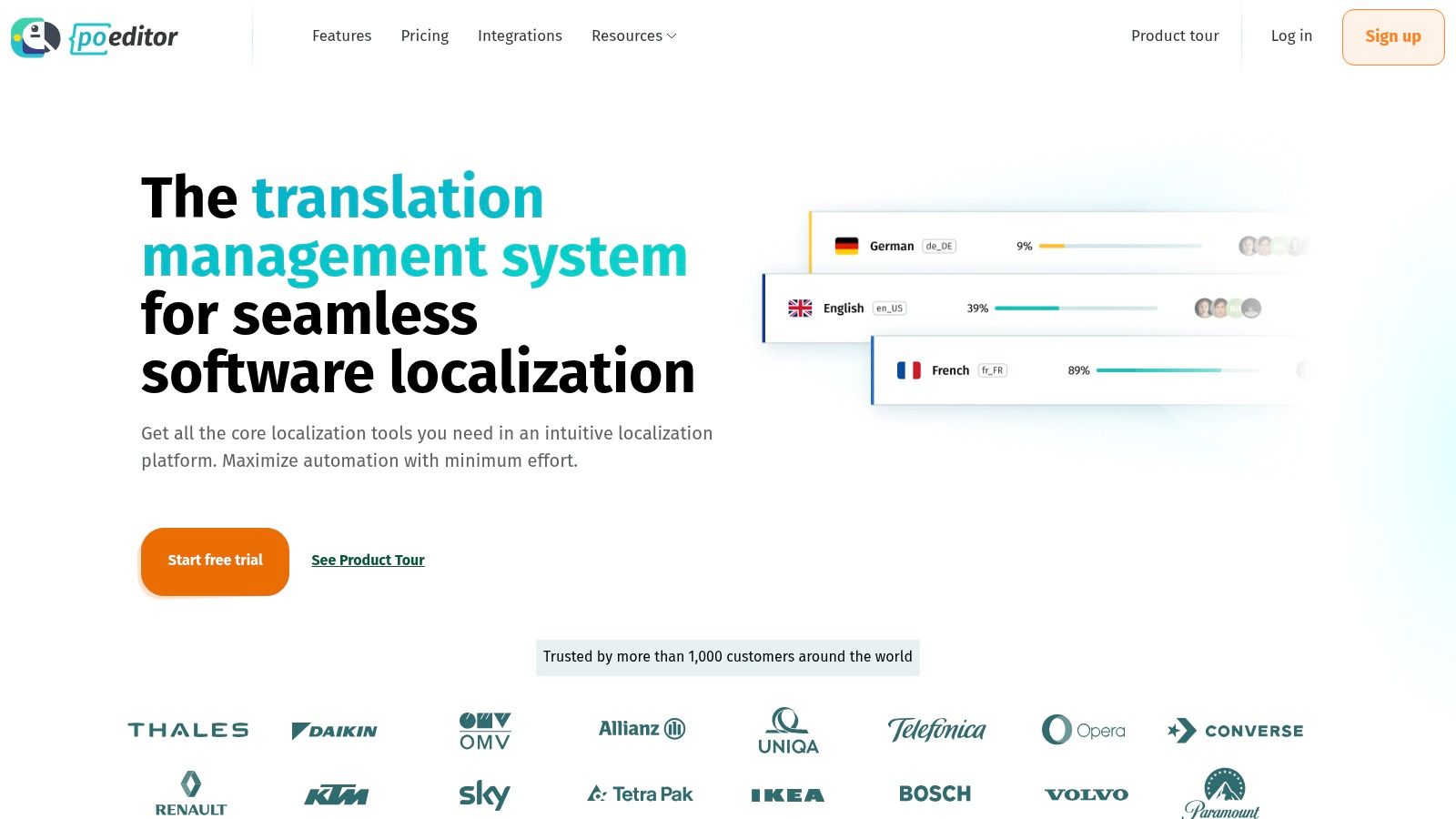
The platform supports a wide array of localization file formats, including PO, XLIFF, and JSON, and integrates directly with developer repositories like GitHub, GitLab, and Bitbucket. This allows for automated synchronization of translation files, fitting neatly into an agile workflow. Its clean, modern interface is often highlighted by users as a major advantage, making it easy for non-professional translators and project managers to contribute effectively.
Website: https://poeditor.com
Text United offers a versatile, cloud-based translation and localization platform that bridges the gap between outsourced professionals and in-house teams. While not a direct code language translator for syntax conversion, it excels at managing the localization of software projects by supporting resource files alongside a wide array of other document types. It creates a unified environment for teams to collaborate on translating everything from user interfaces to marketing materials.
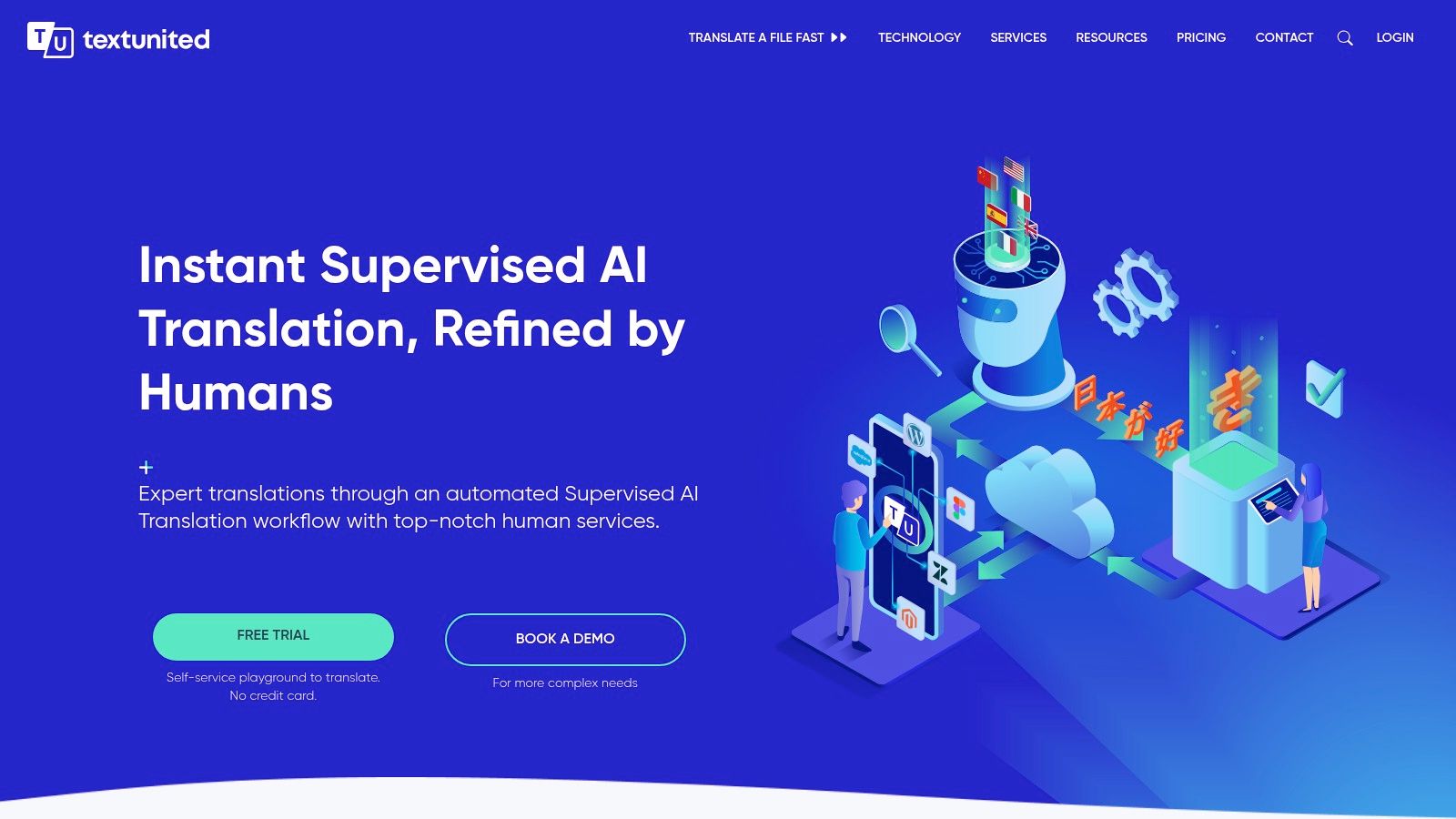
The platform distinguishes itself with its broad file compatibility and deep integrations. For developers, connections with GitHub, Bitbucket, and SharePoint streamline the process of syncing translation files within existing workflows. Its support for translation memory and terminology management ensures linguistic consistency across all project assets, from a web app to a PowerPoint presentation, making it a comprehensive solution.
Website: https://textunited.com
Pairaphrase is an enterprise-level translation management system engineered for security and professional use cases, moving beyond typical string translation. While not a direct code language translator for syntax conversion, it excels at securely translating documents and files integral to software development projects, such as technical documentation, user guides, and even design files. The platform’s core value is its secure, private environment, making it ideal for teams handling sensitive or proprietary information.
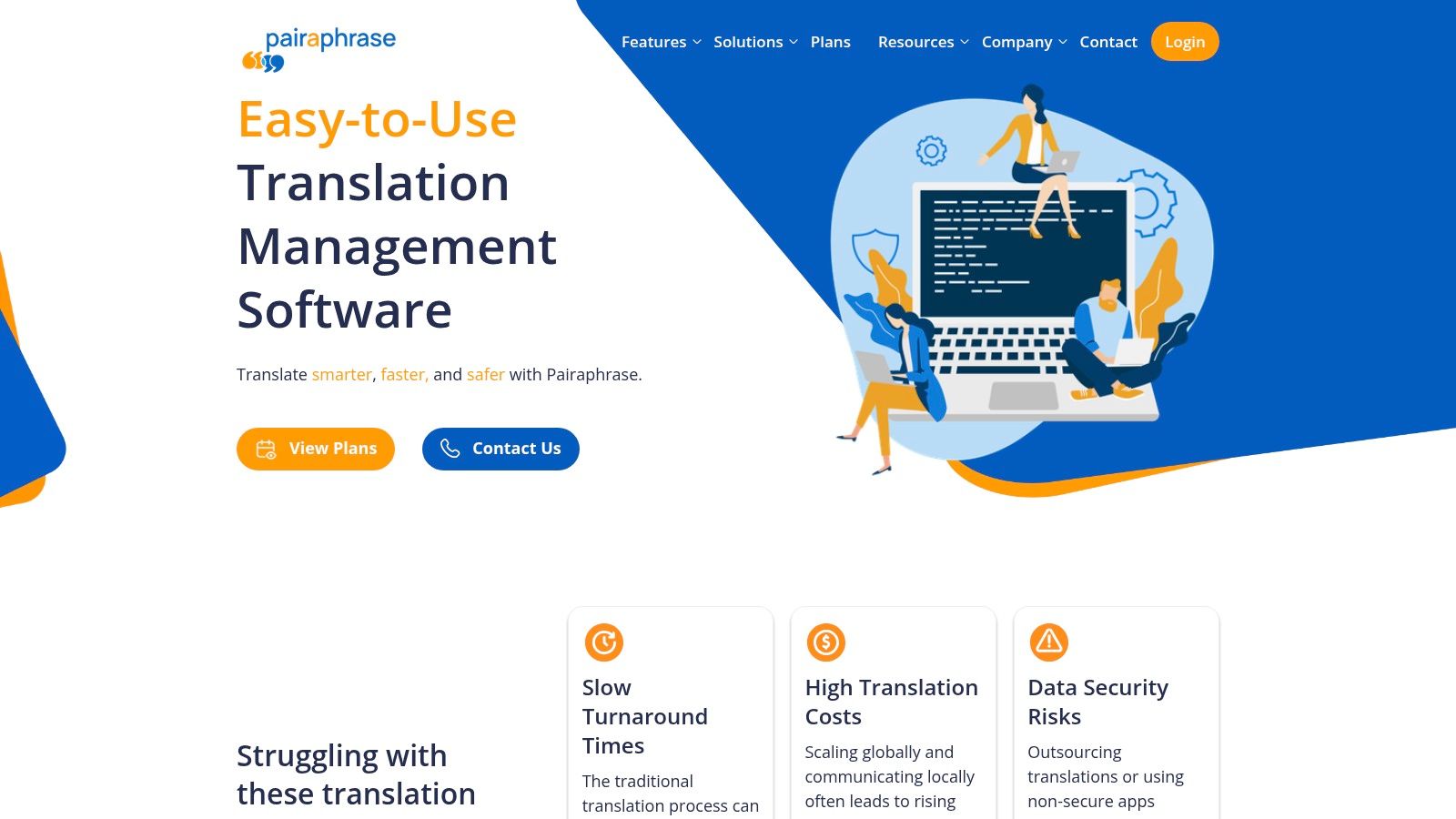
Its ability to process 24 different file types, including complex formats like AutoCAD and InDesign, sets it apart. This allows development teams to translate not just text but the entire ecosystem of assets surrounding a software product. The translation memory bank feature further streamlines the process by storing and reusing previously translated segments, ensuring consistency and saving time on repetitive content.